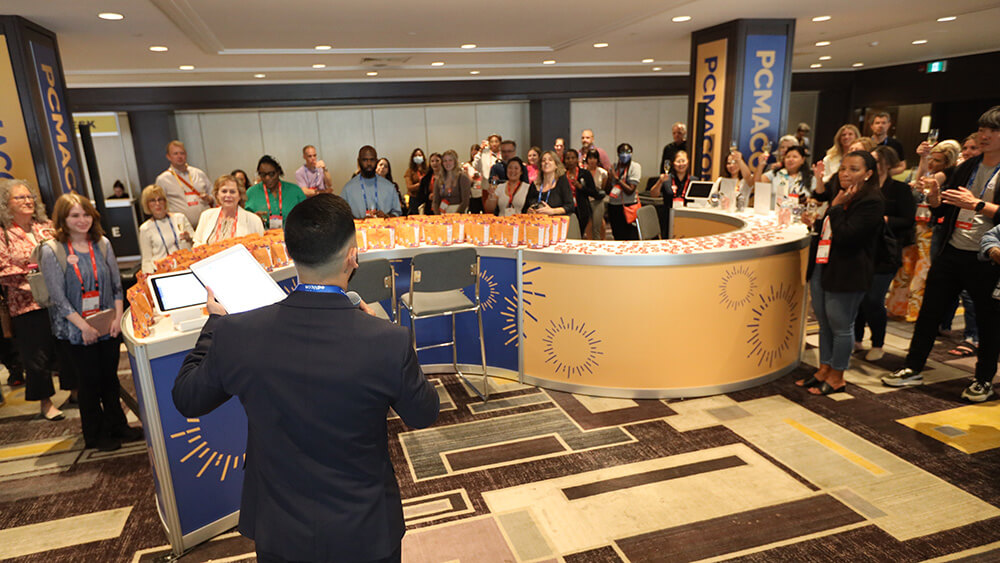
In addition to offering a first-timer orientation at your event, like this one at PCMA EduCon 2023, create and facilitate design-your-day sessions each morning. (Whatever Media Group)
In his book, The Paradox of Choice, author Barry Schwartz writes: “Learning to choose is hard. Learning to choose well is harder. And learning to choose well in a world of unlimited possibilities is harder still, perhaps too hard.” For complex conference programs, this insight means that you can increase satisfaction — and reduce attendee anxiety — by providing them with several targeted choices.
Architecting Choice
Marriott, PCMA, CEMA, and Storycraft Lab recently released a report, “Six Truths for Innovative Event Strategies,” that is primarily influenced by corporate event marketers but can be applied to association annual conferences. For conferences that develop education sessions that appeal to a broad audience, applying the principles in this study can improve the attendee experience.
Configure the Attendee Journey
The second truth explored in the study, Architecting Choice, suggests you view your role as a “curator of choice.” Here are four practical ways to put that into practice:
1. Create and publish recommended itineraries. Identify six to eight attendee personas. Challenge your conference committee or internal subject matter experts to develop attendee journeys for each persona.
Provide up to three choices during concurrent session time slots. Publish these itineraries on the website about a month before the event.
2. Design-your-day sessions. Many attendees wait until the event actually starts to make decisions on which session to attend. In addition to offering a first-timer orientation, create and facilitate design-your-day sessions each morning. Recruit veteran attendees or conference committee members to help guide attendees to make choices on how to plan and get the most out of their day.
3. Provide in-session recommendations. Instruct session moderators and speakers to identify sessions occurring later in the program that are likely to appeal to those who attended their session. Create a templated slide with prompts like “If this session was helpful, consider going to this session, and this one, too.”
4. Program white space. Fifteen-minute breaks do not give attendees enough time to take care of their needs, network, and find their way to the next session. Where possible, build in 30 minutes between sessions.
Tech-Enabled
While event mobile apps can help improve an attendee’s decision-making, their effectiveness is dramatically increased by intentional design. Consider these recommendations:
- Develop session tracks or learning pathways that are problem-based, not role-based.
- For each session, identify “who this is best for.” Limit to no more than three attendee segments.
- Improve your ability to make smart recommendations by developing a tagging methodology that uses three to five keywords for each education session.
Dave Lutz, CMP, is managing director of Velvet Chainsaw Consulting.
